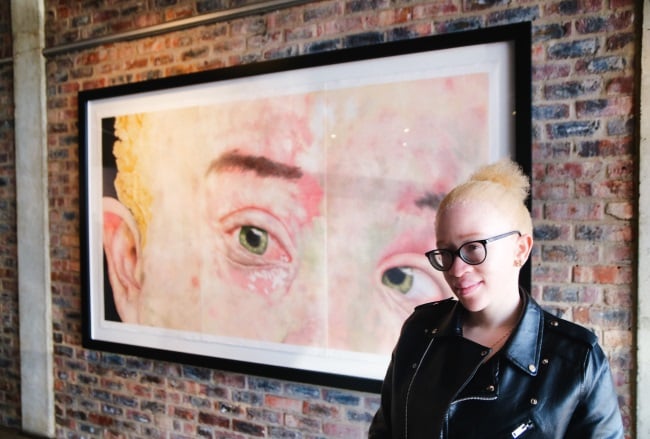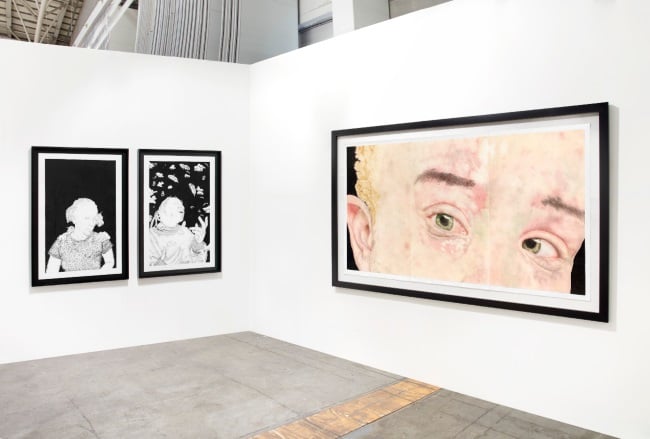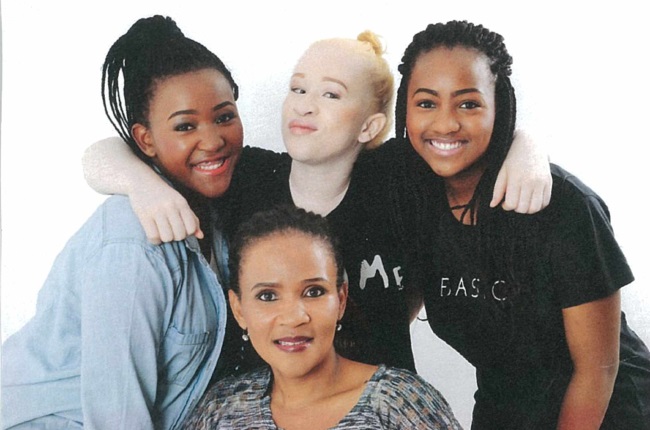
Athenkosi Kwinana from Corana in Mthatha, Eastern Cape, spent most of her childhood surprised by the stigma and stereotypes attached to albinism, especially from those outside of her home.
The 27-year-old’s passion for visual art started when she was a little girl and struggled to watch TV because of her poor eyesight, caused by albinism.
Albinism is a genetic disorder that affects the body’s ability to produce melanin, the pigment that colours skin, hair and eyes.
For Athenkosi, the hobby she used as an escape became a passion, and her work was recently showcased at the Cape Town Art Fair.
She shares her story with YOU.
“When I was growing up, I struggled to watch TV, because of my poor eyesight, so I’d stand right in front of it, blocking everyone’s view. My mother, Shumikazi Kwinana, decided to give me paper and a pen, and I’d draw to distract myself from watching TV.
Even though I was surrounded by love and support, this made me realise that I was different. Navigating my way outside home was very challenging because I'd get weird comments, but I knew where to go and where not to.
I attended Dreamland Primary School, a non-racial school, and I’d easily get along with white kids because of my skin tone but the other kids didn’t quite understand seeing a black child without melanin.
Life at school was great until the schoolday ended. My friends would go home but I’d stay behind at aftercare, and I’d often feel isolated and different because most of the kids never wanted to play with me, or even touch me.
Drawing was my only friend, so I’d sit in the corner with my paper and a box of crayons and draw.
I trained myself to draw from a young age, even though I’m visually challenged. People seem to find it fascinating that I only use my glasses to zoom in on things from a distance.
Art was my escape and therapy when I was a child, now I use it to educate and raise awareness about albinism.
I’ve moved around a lot. I went from Mthatha to East London, then Johannesburg, where I completed high school at Bryanston High School.
I’m glad we always lived in multi-racial neighborhoods where people were aware of the reality of albinism and didn’t believe the myths that some people perpetrate in black society.
I later realised that the hate and stereotypes surrounding black people living with albinism was a result of miseducation and misconceptions. In traditional black communities, people with albinism were often associated with bad luck and called ‘freaks of nature’, and that’s why we’ve been subject to abuse.That’s factually wrong, of course, and through my art I aim to change how we’re represented.
The arts and entertainment industry doesn’t have a history of diversity – we’re only starting to get there now. When I grew up watching TV in the late 1990s, albinism was not represented, and you’d hardly ever see actors and actresses with the condition.
The lack of representation pushed me to explore different drawing techniques so I could communicate to the world.
READ MORE| MY STORY | Drawing on tissue paper wasn't easy – now it's my signature
I enrolled at Walter Sisulu University to study fine art and I’ve recently completed my master’s in fine arts at the University of Johannesburg.
I’ve published research work on living with albinism in South Africa and the world, and it’s available at the applied art department of Walter Sisulu University.
Soon enough, I was noticed by Berman Contemporary, a Johannesburg-based art gallery which promotes work by local artists. They helped me apply for the Cape Town Art Fair so I could showcase my work.
Two of my artworks, Blue and iShumi, were sold at the fair.
I’ve also exhibited at the annual summer show of Berman Contemporary in Johannesburg; Senses and Lenses, curated by Gcotyelwa Mashiqa; the annual winter show curated by Morgan Kunhardt or Berman Contemporary; and Together with East London Finding Albus: Reframing the Representation of People Living with Albinism, at the Ann Bryant Gallery.
I’m glad to have had support to do this from my mom and my two little sisters, Nangomso and Milani Kwinana.
I want my work to be timeless and educational, when people see my work it should tell a story and educate them about the issues.
My advice to people living with albinism is to take pride in yourself and love yourself the way you are.”
EXTRA SOURCE: BERMANCONTEMPORARY.COM




 Publications
Publications
 Partners
Partners






















